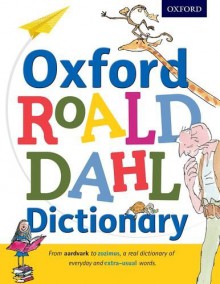Python Dictionary: How to Create Dictionary in Python, access, reassign and delete python dictionaries. Learn built-in functions, methods & operations

Python Dictionary: How to Create Dictionary in Python, access, reassign and delete python dictionaries. Learn built-in functions, methods & operations

For more reviews, check out my blog: Craft-Cycle
This book was perfect. I'll admit, it took me longer than usual to finish this one. Part of that was that I often have a few minutes to read here and there during my workday. I tried reading it then, but didn't get very far and kept forgetting what was going on and would have to reread sections. I eventually found it best to read an entire chapter at a time (perfect for my weekly read-in-the-bathtub-nights). Once I got into the swing of things, I really looked forward to the next time I could read a chapter.
Honestly, this is just such a fascinating book. It's something I never really thought about before. I love words and books and language, but this was a whole new perspective for me. And it was so amazing. I really loved it.
Stamper discusses such topics as defining "wrong words" (words that aren't words, but become words through common use), example sentences, pronunciation, and reader correspondence. My favorite section was on "bad words". It was so interesting.
My husband heard about this book on NPR and bought it for me (because he knows me so well). It is one of the best books I have ever read. Deeply fascinating and very well written with just the right amount of humor. I absolutely loved Stamper's writing style.
If you love words, this is the book for you. Highly recommend.
 Until a few years ago, I had a very specific idea of what "loving the English language" meant. It meant that there was a holy "Good English" to which I ascribed, and though I loved to play with words, "can" and "may" were different, "who" and "whom" differentiated the knowledgeable from the chaff (though I've always had a hard time knowing when it was the right time to use it). People who used "Good English" were smart, and I wanted to be as smart as possible. Most people do.
Until a few years ago, I had a very specific idea of what "loving the English language" meant. It meant that there was a holy "Good English" to which I ascribed, and though I loved to play with words, "can" and "may" were different, "who" and "whom" differentiated the knowledgeable from the chaff (though I've always had a hard time knowing when it was the right time to use it). People who used "Good English" were smart, and I wanted to be as smart as possible. Most people do. I love Roald Dahl because thanks to him and Johnny Depp with his spectacular Willy Wonka I discovered Charlie and the Chocolate Factory and an imaginary world interesting and captivating. I read all the Wonka books and I continued with many others as well.
I love Roald Dahl because thanks to him and Johnny Depp with his spectacular Willy Wonka I discovered Charlie and the Chocolate Factory and an imaginary world interesting and captivating. I read all the Wonka books and I continued with many others as well.
It is important to begin using dictionaries as soon as possible with young learners. I would be certain to have a dictionary like this one available to any kindergarten through fifth grade class. It would be optimal to have one per student or at least one per every two to three students.
With the youngest of learners, they can simply be introduced to what a dictionary is! A great activity is for them to copy words for the letter of the week or the letter the class is most focused on. For example, if a class is working on writing certain letters, have the students look for five words that begin with those letters and copy them into their journals. Then, ask the students to draw a picture for each of those words they chose. This is a great reading and writing activity although it seems so simple.
grade level equivalent: 2.7